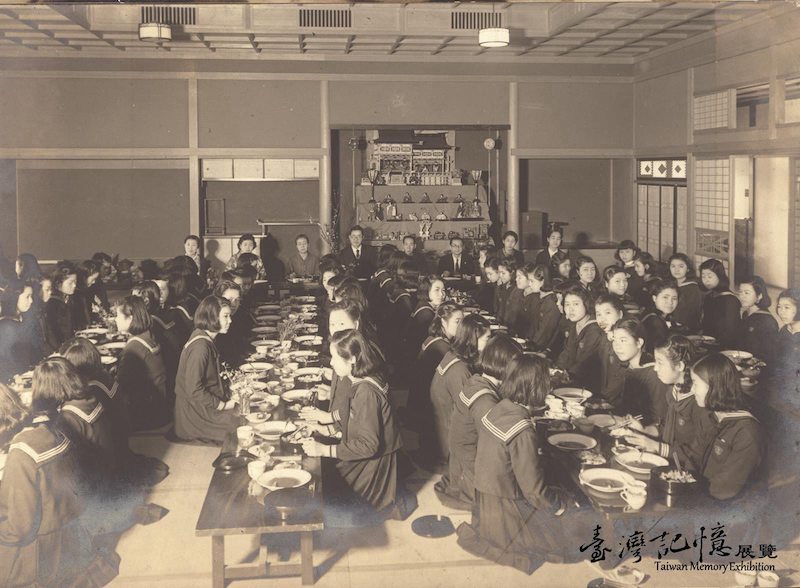The Star Festival in Japanese is pronounced “tanabata,” which is a weaver’s loom. Because of this the festival is also known as the Tanabata Festival.
This festival originated in China, where it is called the Double Seven Festival and has a similar legend about the cowherd and the weaver girl. One main difference is that the Japanese festival is normally held on July 7th of the Gregorian calendar (whereas the Chinese festival is held on the seventh day of the seventh month of the lunar calendar). The most popular place to celebrate this festival is in Sendai in northeast Tokyo.
This picture was taken around 1941 and shows a Star Festival dinner gathering at the private Taipei Girls High School. This school was located where the Mandarin Experimental Elementary School is today and was the highest institution of learning for girls during the colonial period. It was also the first school that adopted a model similar to professional schools today. Most of the students were Japanese, with some Taiwanese girls from wealthy families. Former First Lady Tseng Wen-hui graduated from here. While courses offered included philosophy and literature, most were centered on home economics, such as flower arrangement, culinary arts, and fashion. The school closed down in 1943 and was turned into the more formal Private Girls Junior College.

The Tanabata Festival
- NCL Special Collection / Zhong Min-xiu / 1941-1942 / 15.5×11.2cm / 《Visual Feast》


